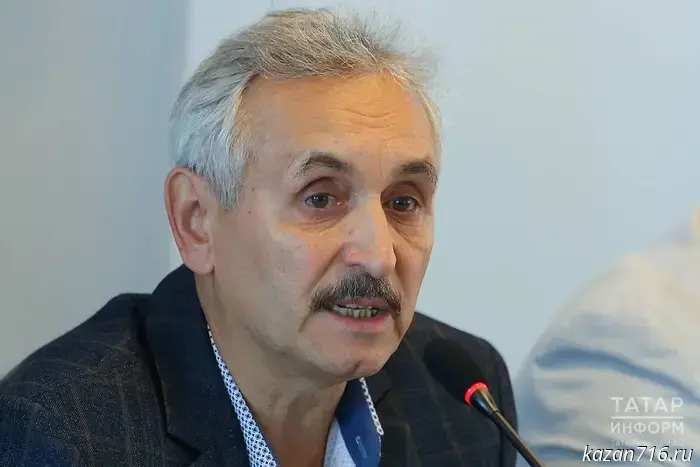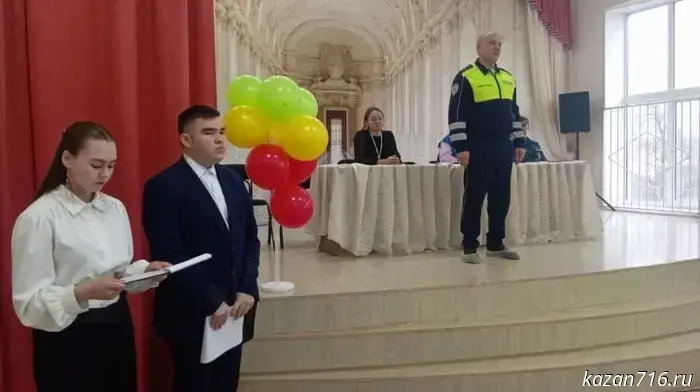
"The white-tailed eagle and the cormorant are still flying": scientist on abnormal behavior of birds in November
This year’s autumn bird migration in Tatarstan is proceeding with anomalies
“I spotted a white-tailed eagle over Lake Kaban”
According to Ilgizar Rakhimov, birds migrate to warmer regions in three waves, depending on climatic factors. The first wave left for wintering grounds back in summer — swifts and orioles flew off in August. “They left at the proper time, not because they were cold but because they were hungry. Birds lack food; this is connected to the length of daylight. The main mass of birds leaves in the second wave, which has been prolonged until now,” the ornithologist told Tatar-inform. Recently he received a message that residents of Kazan had noticed cranes flying in the sky. These birds should have left in October. The first ten days of November have already passed, yet the second wave of departures is still continuing. “All because the autumn has been relatively warm; daytime temperatures sometimes rose to plus 10 degrees. Some insects have even woken up,” Rakhimov explained. The second wave usually contains birds that feed on insects. Redstarts, flycatchers, and swallows have left. They wouldn’t be able to find enough food now. However, many birds have stayed for a long time. “In November we usually no longer see warblers. These are small grey shrub-dwelling birds that eat insects and berries. I saw some in a city square the other day. Some raptors also try to leave before the frosts arrive. This year birds of prey are still here. Just at the end of last week I was driving and noticed a white-tailed eagle over Lake Kaban,” Ilgizar Rakhimov said. The white-tailed eagle is a large raptor that in recent years has been lingering in our area and sometimes even stays for the winter. These birds do not like large groups and forage for food at landfills.
“Cormorants are still flying over the Kazanka”
“The other day I saw a hobby falcon. It too should have left long ago, but it’s still here. Cormorants are still flying over the Kazanka. These are southern birds that should already have moved on. Gulls should have left long ago, but they are still feeding on open water and at landfills,” the scientist continued. Rooks in previous years would have already left by this time. The ornithologist noted he wouldn’t be surprised if most of them remain in our region, since winters have become mild in recent years. Now not only mallards but also tufted ducks stay for the winter. They winter here by the thousands. Strangely enough, a great crested grebe can still be seen on Kaban. Swans also have not yet left; it is still warm enough for them. The third wave consists of herbivorous birds. Waterfowl leave last, but many ducks remain for the winter. “Only last year, 2,000 ducks wintered here, whereas about ten years ago only a few dozen wintered — they would fly from Lake Kaban to other water bodies,” Rakhimov noted.
“Conditions here are like a resort for waxwings”
According to the KFU lecturer, one of his students saw waxwings in Kazan at the end of last week. These birds feed on rowan berries. “They live far to the north, in Siberia. They usually arrive to winter when the cold sets in. But they have already come to our region. Right now conditions here are like a resort for waxwings in terms of temperature and food. If they’ve arrived, it means winter has already come up north; our region is warm country for them,” the ornithologist said. Waxwings are usually followed by bullfinches, bramblings, snow buntings, and other small passerines, and among larger species — the snowy owl. Rakhimov said that due to anomalous warmth, southern species such as cormorants and great egrets have recently been spreading into our territory. The former pose a threat to the local fauna. “The problem is the large cormorant. It’s a southern bird; I saw one over the Kazanka the other day. It is an active fish-eater and highly undesirable for our region. There have already been complaints from fishermen that cormorants are actively eating fish in the republic’s pond farms and thus causing enormous damage. We don’t yet know how to deal with it. You can’t shoot them — they are not in the hunting group. We are now studying this issue. I hope there will be recommendations on how to proceed with cormorants,” Ilgizar Rakhimov said. Two years ago ruddy shelducks, also called red ducks, were spotted in the republic, and this year the birds reproduced. “This indicates that a new species is joining our fauna. The red ducks will become an ornament of our water bodies,” Rakhimov believes.
“Birds have very good memories; they remember the star map”
When heading for wintering grounds, birds, contrary to the stereotype, do not fly strictly south. “Our birds go to warm regions — I don’t say ‘to the south’; that’s a mistaken notion from fairy tales and literary works. In fact, most birds from our region fly southwest or southeast, and some fly straight west or east. Birds leave for areas where the climate is more favorable for them,” the Kazan ornithologist explained. Birds cover huge distances, flying thousands of kilometers. During migrations they rest at water bodies, regain strength, and continue on their way. How do they avoid getting off course? It turns out there are several theories. It is believed that birds orient themselves by certain natural features — for example, flying along a river. “Geographical landmarks have formed over many years. Sometimes stars can serve as a guide, especially during night or twilight flights. Birds have very good memories; they remember the star map. Research also shows that birds have an internal magnet in the brain that works like a tiny compass. Birds sense the Earth’s magnetic fields,” Ilgizar Rakhimov noted.
“No duck has ever died from eating bread”
Finally, he said that in cold periods people should feed tits, sparrows, and pigeons. “I am an advocate of feeding birds. Winter is a harsh period, and we can help them survive difficult days. Birds don’t die from the cold — their body temperature is above 40 degrees — but from hunger and exhaustion,” Rakhimov said. According to him, tits are a very useful species found in forests, gardens, and parks. They nest near humans and need supplemental feeding. These small yellow-breasted birds especially like raw sunflower seeds and pieces of lard. Lard is a great joy for them. To finish, the KFU ornithologist debunked the myth about feeding ducks bread. “I’m often asked: can you feed ducks bread? Someone started an internet tale that ducks die after eating bread. No duck has ever died from eating bread,” Rakhimov concluded.
Photo: elabuga-rt.ru
Другие Новости Казани (Казань716)
 In Nurlat, the victims of road accidents were commemorated.
On the eve of the World Day of Remembrance for Road Traffic Victims, a poignant and important event aimed at preventing child road injuries took place at Secondary School No. 3 in the city of Nurlat. 16.11.2025. Nurlat-Inform. Republic of Tatarstan. Nurlat.
In Nurlat, the victims of road accidents were commemorated.
On the eve of the World Day of Remembrance for Road Traffic Victims, a poignant and important event aimed at preventing child road injuries took place at Secondary School No. 3 in the city of Nurlat. 16.11.2025. Nurlat-Inform. Republic of Tatarstan. Nurlat.
 In Chistopolsky District, a Nissan driver died after the car overturned into a ditch.
A 68-year-old man failed to choose a safe driving speed
Consequences of the accident. November 16, 2025. Komsomolskaya Pravda Kazan. Republic of Tatarstan. Kazan.
In Chistopolsky District, a Nissan driver died after the car overturned into a ditch.
A 68-year-old man failed to choose a safe driving speed
Consequences of the accident. November 16, 2025. Komsomolskaya Pravda Kazan. Republic of Tatarstan. Kazan.
 An 84-year-old Lada driver died in a collision with a Volvo truck in the Almetyevsky District.
Traffic police officers are working at the scene of the accident.
A fatal accident occurred this evening in the Almetyevsky District of Tatarstan. 15.11.2025. New Life newspaper. Republic of Tatarstan. Bolgar.
Putin spoke on the phone with Netanyahu.
Russian President Vladimir Putin spoke by phone with Israeli Prime Minister Benjamin Netanyahu. 15.11.2025. Business Online. Republic of Tatarstan. Kazan.
An 84-year-old Lada driver died in a collision with a Volvo truck in the Almetyevsky District.
Traffic police officers are working at the scene of the accident.
A fatal accident occurred this evening in the Almetyevsky District of Tatarstan. 15.11.2025. New Life newspaper. Republic of Tatarstan. Bolgar.
Putin spoke on the phone with Netanyahu.
Russian President Vladimir Putin spoke by phone with Israeli Prime Minister Benjamin Netanyahu. 15.11.2025. Business Online. Republic of Tatarstan. Kazan.
 KFU ornithologist: Waxwings have arrived in Kazan earlier than usual
The first winter visitors — waxwings — arrived in Kazan this year in November, earlier than usual. 15.11.2025. Tatar-inform News Agency. Republic of Tatarstan. Kazan.
KFU ornithologist: Waxwings have arrived in Kazan earlier than usual
The first winter visitors — waxwings — arrived in Kazan this year in November, earlier than usual. 15.11.2025. Tatar-inform News Agency. Republic of Tatarstan. Kazan.
 A woman sold illegal substances from her own apartment.
The Novo-Savinovsky District Court of Kazan remanded a 20-year-old local resident in custody, accused of attempting to sell narcotics on a large scale. November 15, 2025. Almetyevsk RTV. Republic of Tatarstan. Almetyevsk.
A woman sold illegal substances from her own apartment.
The Novo-Savinovsky District Court of Kazan remanded a 20-year-old local resident in custody, accused of attempting to sell narcotics on a large scale. November 15, 2025. Almetyevsk RTV. Republic of Tatarstan. Almetyevsk.
"The white-tailed eagle and the cormorant are still flying": scientist on abnormal behavior of birds in November
This year's autumn bird migration in Tatarstan is taking place with anomalies "I noticed a white-tailed eagle over Lake Kaban" According to Ilgizar Rakhimov, the birds are flying to warmer climes in three echelons, 15.11.2025. Tatar-inform News Agency. Republic of Tatarstan. Kazan.
